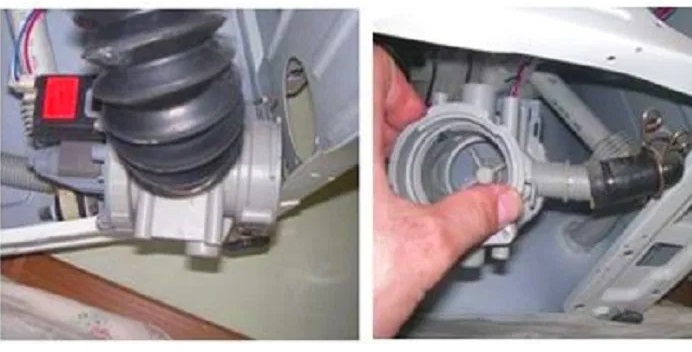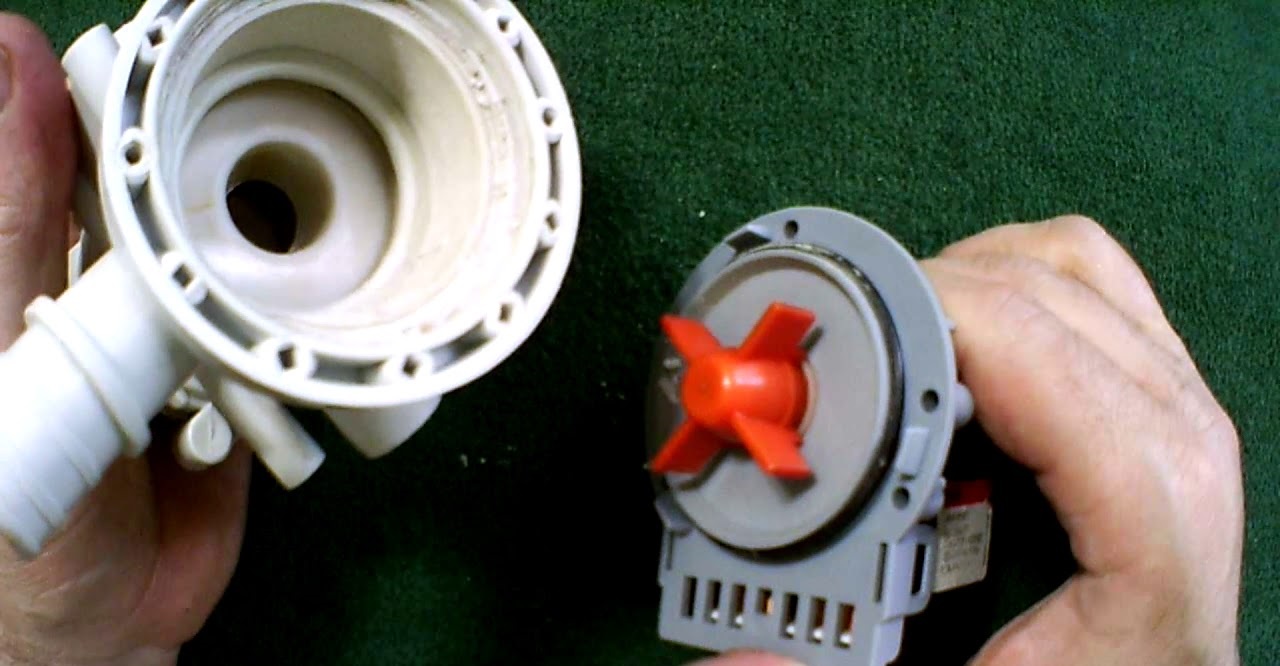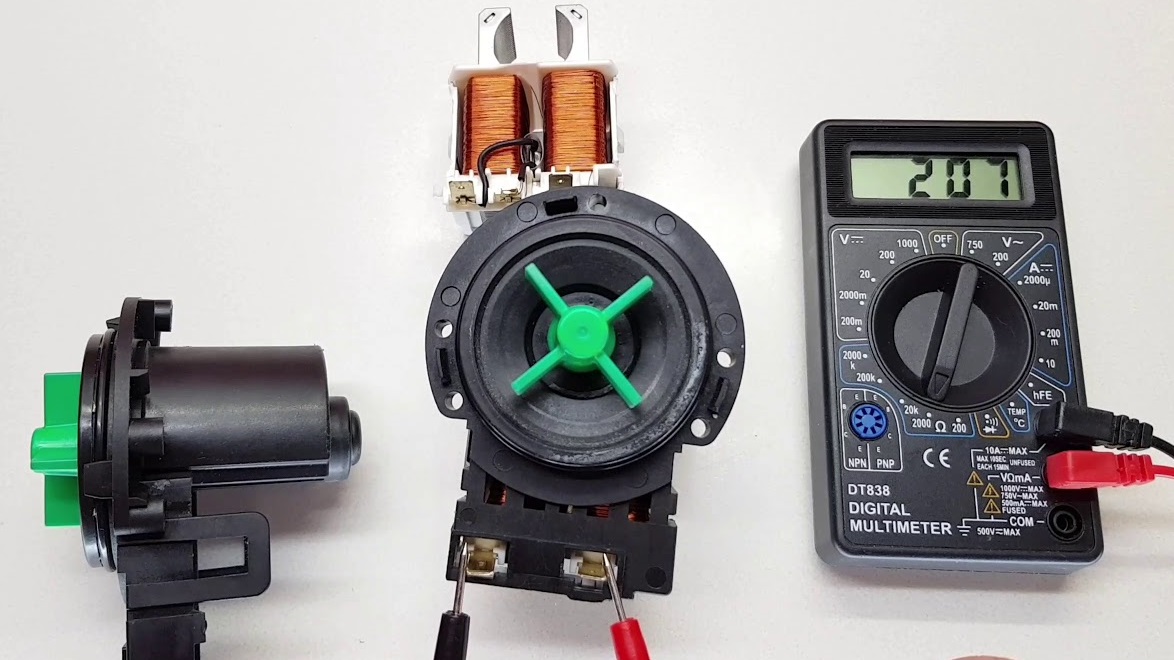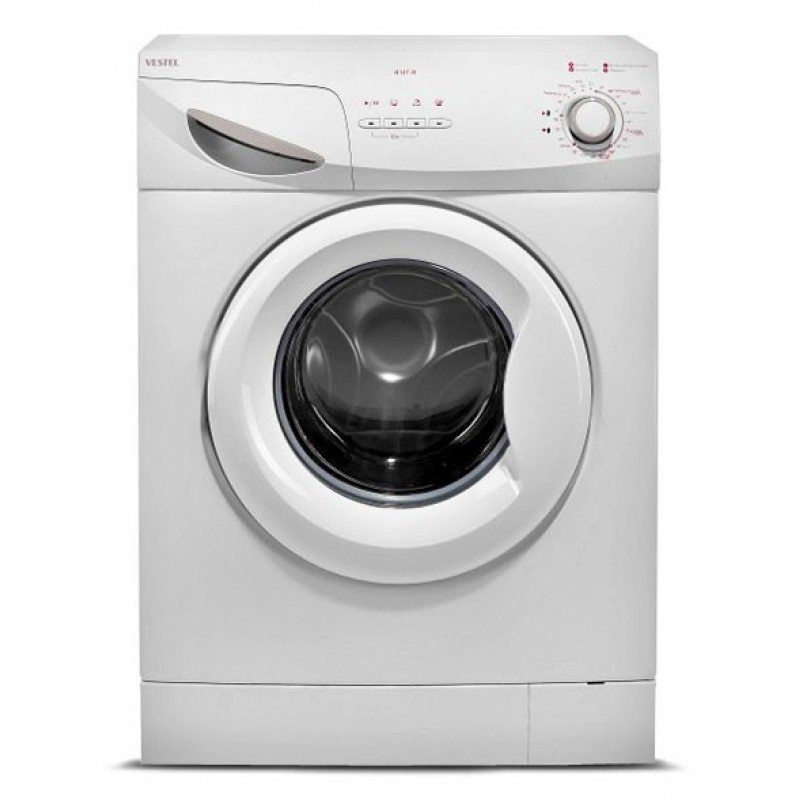Vestel washing machine does not drain water
 If the Vestel washing machine does not drain the water, then the planned wash will have to be postponed. Moreover, the machine will “stand up” with a full tank, and unwashed laundry will be locked up. The equipment will try to restart the pump, buzz for a couple of minutes, after which it will “give up”, cancel the program and display the corresponding error code on the display. To complete the cycle and get things out, you will have to diagnose the system and identify the cause of the stop. How to proceed - see below.
If the Vestel washing machine does not drain the water, then the planned wash will have to be postponed. Moreover, the machine will “stand up” with a full tank, and unwashed laundry will be locked up. The equipment will try to restart the pump, buzz for a couple of minutes, after which it will “give up”, cancel the program and display the corresponding error code on the display. To complete the cycle and get things out, you will have to diagnose the system and identify the cause of the stop. How to proceed - see below.
We start diagnostics with a filter
It is almost impossible to immediately determine the reasons for the delayed drainage. Especially if there is no data on the behavior of the machine before the failure. It is important to know at what stage the machine “froze”, whether the pump was able to pump out some of the water, and what sounds it made Vestel when trying to overclock the pump. Then there is a chance to localize the problem based on the “symptoms”. Otherwise, you will have to sequentially check the entire drainage system of the equipment.
Typically, water stops being pumped out of the drum due to problems with the debris filter or pump. The first one often becomes clogged with debris that gets into the machine, and the second one breaks or gets stuck due to hair wrapped around the impeller. In any case, it is recommended to start the check with the “trash can” in order to eliminate clogging and drain the water from the machine. To check the garbage filter, it must be unscrewed from the housing. We proceed like this:
- disconnect Vestel from power supply and water supply;
- we move the machine away from the wall or take it out of the furniture set;
- We remove items that do not tolerate moisture from the washing machine (dry detergents, rugs);
- spread oilcloth and rags around the machine;
- use a screwdriver to pry open the technical hatch door located in the lower right corner of the Vestel;
- we find a garbage filter - a black plug;

- lean the body against the wall so that the front legs rise 5-8 cm;
- Place a container under the filter to collect water.
The next step is to unscrew the garbage filter. We take hold of the protrusion on the plug and slowly scroll it clockwise. There is no need to rush, otherwise a stream of dirty water will rush out of the body. As soon as the flow dries up and the nozzle loosens, you can completely remove the “trash can” from the hole. A little dirt will spill onto the floor, so it’s better not to neglect the oilcloth and rag.
Do not wash the garbage filter in hot water - plastic and rubber are deformed in boiling water!
The removed filter needs to be cleaned. If the “crust” of plaque and debris is small, then it is enough to rinse the nozzle under the tap. Sticky dirt is cleaned off with a toothbrush and laundry soap. A thick layer of scale cannot be removed so easily with your own hands - you need to soak the coil in a warm lemon solution. Boiling water cannot be used, as the plastic and rubber seal are deformed at high temperatures.
Be sure to also check the filter seat. It is possible that due to a thick layer of plaque and scale, water cannot “pass” into the sewer. For cleaning we use the same products: toothbrush, soap and dish sponge.
Dismantling the drain pump
If the seat of the garbage filter and the nozzle itself were clean from the very beginning, then you should look for a breakdown somewhere else - in the drain pump. It is the pump that is supposed to pump water out of the tank, but if it becomes clogged or fails, this becomes impossible. To correct the situation, you will have to dismantle the device, inspect it, and, if necessary, clean and repair it.
Whenever manipulating Vestel, remember the safety rules: disconnect the machine from communications and use gloves!
Vestel users are lucky - it’s easier for them to get to the “heart” of the drainage: just look under the bottom of the machine. Detailed instructions on what to do to dismantle the pump look like this:
- prepare a wrench, screwdrivers and a container for collecting water;
- disconnect Vestel from communications (unplug the power cord from the socket, turn off the water supply, unhook the drain hose);
- disconnect the technical hatch panel;
- drain the water from the drum by unscrewing the garbage filter or using the emergency drain hose;
- turn the washer on its side (it is important to choose the side on which the powder receptacle is located, otherwise it may leak onto the board);
- disconnect the bottom from the body (some models have “Aquastop” leakage protection, which must be disconnected by removing the terminal);
- look under the bottom and find the pump;
- loosen the screws holding the pump;
- disconnect the connected wires and pipes from the pump;
- turn the device counterclockwise, and then carefully press its body inward;
- remove the pump from the grooves and remove it.
It is impossible to determine the nature of the malfunction by eye. You will have to carefully inspect the device, disassemble, clean and ring. First, we place the pump on the table, then we proceed to diagnostics.
Disassembling and cleaning the pump
Repairing a pump means cleaning it. The pump itself practically does not get dirty; the main blow is taken by the impeller - a “wheel” with blades. Hair, threads and lint that get into the washer often get wrapped around the screw and stop the entire system. In this case, it is easy to restore the functionality of the drainage: it is enough to remove all adhering dirt from the part. We proceed like this:
- unscrew the bolts on the pump body;
- half the body;
- we find the shaft with the impeller;
- We clean hair and other dirt from the blades.

At the same time, we check the impeller itself. It should rotate freely, but not “fly off” the shaft. If the screw falls off, then a breakdown has been detected - it is necessary to fix the part more firmly or replace it completely. The main thing is to refuse glue or electrical tape - such “fixes” are useless and harmful.
It is better to immediately rinse the pump seat - the so-called snail. Then you can return the device to the grooves and secure it with screws. Next, we place the Vestel vertically, insert the garbage filter back and connect the machine to the communications. Be sure to run a test cycle and check that the drain is working properly. Is water leaving the tank? If not, then we return to diagnostics.
Coil diagnostics
It is better not to stop after cleaning the pump, but to ring it immediately. Take a multimeter, switch it to ohmmeter mode and connect the probes to the pump contacts. Afterwards the result is evaluated:
- 150-260 Ohm is normal, the pump is working;
- “0” – failure due to a short circuit;
- less than 150 Ohm – winding break.
It is not recommended to repair a broken winding on the pump yourself or eliminate the consequences of a short circuit. It is much easier, faster and cheaper to purchase a replacement analogue. When purchasing a new pump, you need to rely on the Vestel serial number. You can bring a broken pump to the store and ask for a replacement. Installation is similar to dismantling, only in reverse order. If cleaning the drain and replacing the pump does not restore the drain, then the problem is in the electronic unit. Here, amateur activities are prohibited - only contacting the service.
Interesting:
Reader comments
- Share your opinion - leave a comment
Categories
Washing machine repair


For buyers

For users

Dishwasher

















Add a comment